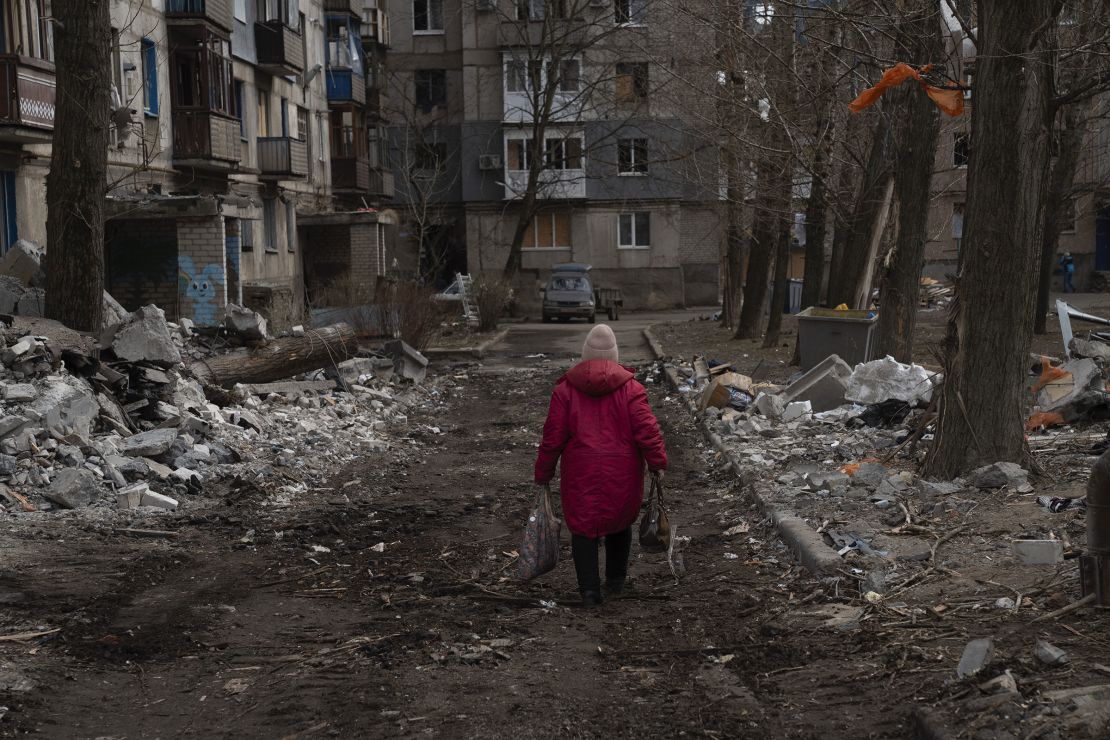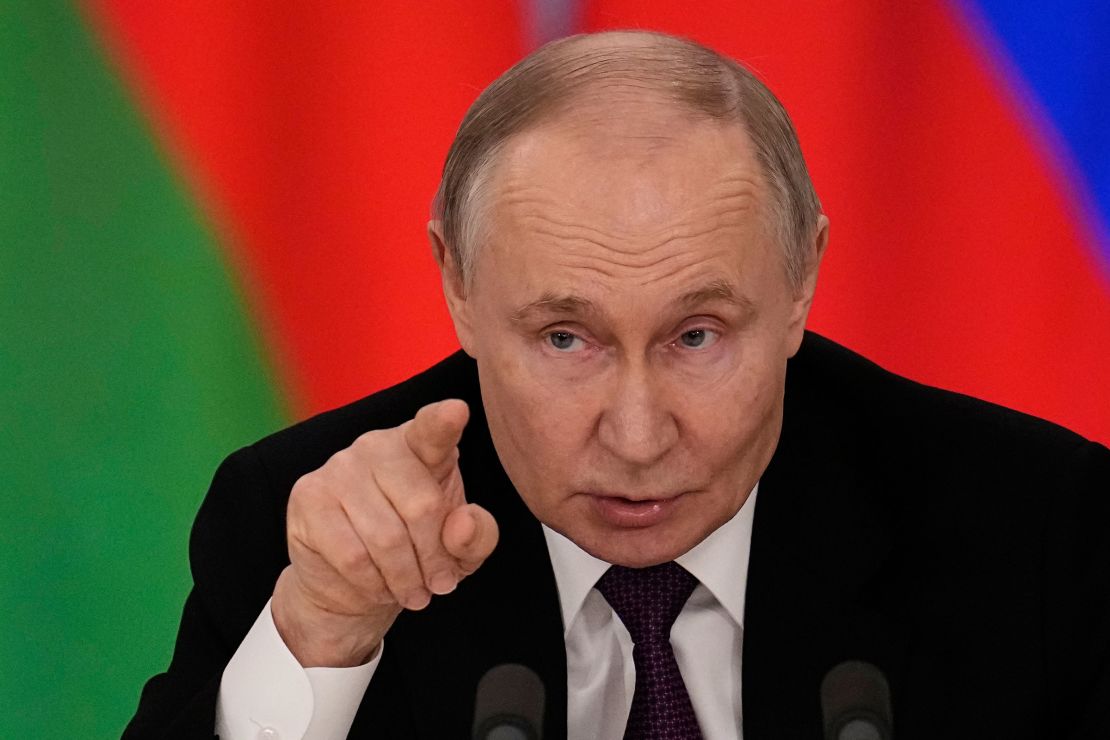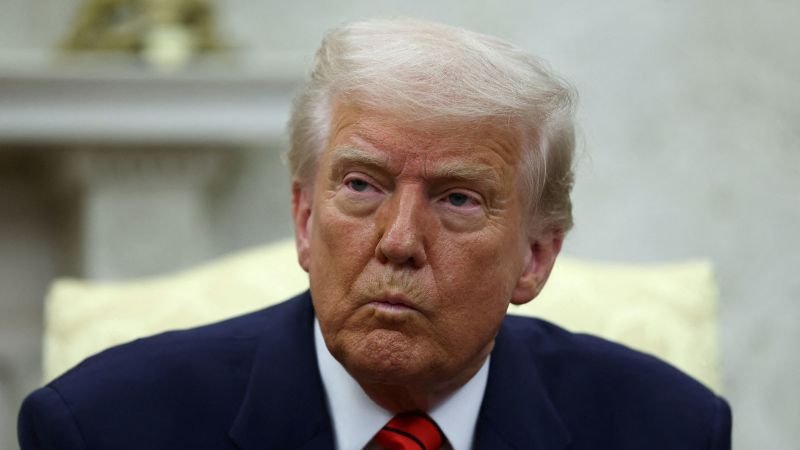CNN
—
President Donald Trump rarely stops bragging about his “great relationship” with Vladimir Putin.
A skeptical world will soon find out whether the supposed mind-meld counts for anything.
The Russian president, author of an unprovoked and brutal invasion of Ukraine, responded in time-honored Moscow fashion Thursday to the US plan for an immediate ceasefire that the administration forced Kyiv into supporting. Putin produced a long set of obfuscations and new demands that would be unacceptable to Ukraine. But they may have been designed to tempt a US president who is desperate for the kind of win a truce would represent.
Putin did not reject Trump’s overture. He called it “great and correct” and said he supported it in principle. He was careful not to alienate a US president who has already offered a series of concessions to Russia before formal peace talks begin, including an understanding that Ukraine would never have a path to NATO membership.
But Putin’s objections and calls for further discussions, including with Trump, were an attempt to buy time, with his troops on the cusp of pushing Ukrainian forces out of Russia’s Kursk region — one of the few bargaining chips Kyiv would have at future peace talks.
Putin also raised questions about the monitoring of any ceasefire, and whether Ukraine would be allowed to rearm during any cessation of fighting, in a way that suggested he was already seeking to shape any eventual agreement to ensure Russian dominance. Putin also referred to the need to tackle the “root causes” of the war. This is code for a number of Russian grievances that include the existence of a democratic government in Kyiv. It also refers to Moscow’s claims that it is threatened by NATO expansion after the Cold War and to its desire to see alliance troops withdrawn from former communist states once in the Soviet Union’s orbit, such as Poland and Romania.
Russia’s response is out of its classic diplomatic playbook, which typically seeks to suck interlocutors into exhausting negotiations that stack up delays and conditions that enable the Kremlin to pursue its strategic goals in the meantime.
Thursday’s events showed just how hard it will be for the Trump administration to move Russia away from its position and into serious negotiations on a ceasefire.
Russia’s stalling contrasted with Trump’s rush for a valuable breakthrough as his trade policies set off stock market slumps and cast a cloud over the economy. “I think we’re going to be in very good shape to get it done. We want to get it over with,” Trump said at the Oval Office on Thursday, in an outburst of optimism that jarred with reality.
Trump put the best spin on Putin’s response, saying he’d issued a “very promising statement, but it wasn’t complete.” He added: “Now we’re going to see whether or not Russia’s there. And if they’re not, it will be a very disappointing moment for the world.” Trump’s optimism was understandable as he seeks to build momentum for a fledgling diplomatic initiative. But his willingness to ignore a new set of onerous conditions from Putin made for a stark contrast with his fury when Ukrainian President Volodymyr Zelensky sat in the Oval Office and tried to explain why he wouldn’t trust Russia’s word in a peace deal without security guarantees.
Retired Adm. James Stavridis said Thursday the Russian leader was staking out a careful line: “If you put it on a scale between ‘nyet,’ ‘no,’ and ‘da,’ ‘yes,’ he’s right in the middle,” he told CNN’s Jim Sciutto. Stavridis, a former NATO Supreme Allied Commander Europe, said the Russian president would take a couple of punches from Trump but would not stop pressing toward his own goals.
Trump repeated Thursday his frequent refrain that there is ocean between the continental US and the largest land war in Europe since World War II. Those closer to the threat are far less optimistic about America’s peace proposals. “I am pessimistic and skeptical about Russia’s intentions and Russia’s will to proceed with a just and sustainable peace,” Latvian Defense Minister Andris Sprūds told Isa Soares on CNN International. He said that Russia was using its typical “salami” tactics to reach its strategic goals, namely by slicing up its overarching political goals and dealing with them “piece by piece.”

Should Trump forge a lasting, sustainable peace in Ukraine, he will deliver a great achievement that might be worth the Nobel Peace Prize that he reportedly craves. More importantly, thousands of lives — Ukrainians and Russians — will be saved. There may also be some truth to the frequent claim of administration officials that only this president has a chance to end the war. While President Joe Biden rallied the Western alliance effectively to provide Ukraine with arms, ammunition and financial aid that saved its independence, there was never a track for peace talks with Putin, who was ostracized after his invasion of Ukraine three years ago.
Trump may also be tapping into fatigue among many Americans at the cost of that support, although his claim that the US has spent $350 billion is a wild exaggeration. And some analysts believe that the new administration is only stating the obvious — that Ukraine will be unable to liberate eastern regions captured by Russia and Crimea, annexed by Putin in 2014. Furthermore, there’s agreement, even among European governments that have sided with Zelensky after Trump’s bullying, that some kind of partition will be needed to end the war.
But Trump’s excessive deference to Putin in his first term and his early praise for the invasion of Ukraine, along with his longtime fascination with the Russian leader, raise doubt about his motives in his push to quickly end the war. Since taking office for a second time, the president has strong-armed Zelensky in a notorious Oval Office photo op and switched official American government sympathies from the victim of a vicious onslaught to its perpetrator, Putin. The president cut off vital US intelligence-sharing that helps Ukraine on the battlefield and to protect its civilians from waves of drone attacks. He also halted US military assistance to force Zelensky to accept his demand for an immediate ceasefire. US supplies and intelligence are flowing again, but the interruption sent a clear message to Zelensky that Trump could end the war on his terms if he wanted.
But will any such pressure be brought to bear on Putin, now that he, unlike the Ukrainian leader, has spurned Trump’s terms? After all, the US president has said for weeks that he was convinced that Putin wanted to stop the fighting. Thursday’s response shows that, at least for now, the Kremlin wants to keep the war going.

The president has this week threatened tariffs on Russian imports and banking sanctions that he said would devastate Moscow’s finances — but after three years of efforts to cut Russia out of the global economy, business interactions between it and the United States are minimal. And Moscow has established channels, including through China, to support its wartime economy.
Trump refused to say on Thursday what leverage he could bring to bear on Putin that might work. But it’s been clear ever since the president took back the White House that he sees Ukraine as a stepping stone on the way to a restored superpower relationship with Russia. The president has, for example, called for Moscow’s return to the Group of Seven. The rich-nations club was known as the G8 until Russia was kicked out after it snatched Crimea. He appears barely able to wait for the opportunity to hold a summit with Putin in person that would restore the Russian leader’s place on the world stage. And Trump’s expansionist rhetoric about folding Canada and Greenland into the US recall Putin’s justifications for the invasion of Ukraine. So there could come a time when the incentives for a broader relationship with Washington convince Putin that it’s time to shelve, probably temporarily, his obsession with Ukraine.
In Trump’s first term, there was rampant speculation about whether he was compromised by Russia; why Moscow intervened in the 2016 election to help him, as US intelligence agencies assessed; and why he admired Putin so much.
The roots of Trump’s obsessions remain unclear, though the allegations he’s an asset of Moscow were never proven and still seem far-fetched.
But in his second term, Trump has attacked longtime US allies and blamed Zelensky for the war instead of the Russian leader who started it.
That’s why traditional US foreign policy experts and governments worry about what the answer would be if Putin asked Trump to help oust Zelensky as a condition for a peace deal — especially since the US president has already suggested, falsely, that the Ukrainian leader who got caught up in his first impeachment was a dictator. And how would the president respond if the Russians called for him to withdraw NATO troops in Eastern Europe to address what Putin falsely calls “the root causes” of the Ukrainian conflict?
The question is whether Trump is negotiating with Putin or whether the Russian leader is manipulating him.

